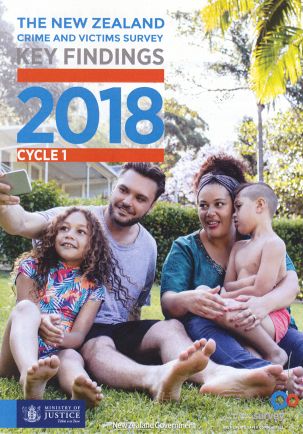A new survey has revealed that just two percent of people suffer 40% of all crimes.
The figure has been revealed in the Ministry of Justice’s New Zealand Crime and Victims Survey which also shows that 29% of New Zealanders had experienced a crime in the 12-month period the survey was conducted.
More than 8,000 people over the age of 15 were interviewed face-to-face between March and October 2018.

At the media conference to unveil the results on Monday, the ministry’s Manager Research and Evaluation, James Swindells, described as “sobering” the fact that such small numbers of people are experiencing so much crime.
“In burglary for example, it’s not uncommon for the same house to be robbed time and time again. Now that’s a household but the same thing can be happening within personal offences, where citizens have been offended against time and time again.”
And the ministry’s Chief Executive Andrew Kibblewhite explained why that is likely to occur to particular people.
“There are issues around discrimination and deprivation and you do get more crimes in deprived communities and then it gets to a point where it does depend on the sort of crime; there will be different reasons why a personal crime might be occurring again and again.”
The breakdown of the random survey results shows that 15% were victimised five or more times within 12 months.
The survey also found that:
- About 20% of all crimes are likely to occur due to race/ethnicity, sex, age, sexuality, religion or disability.
- Two out of five family violence incidents happened when an offender was under the influence of alcohol or drugs.
- It is estimated that only 23% of crimes were reported to the Police over the last 12 months. Mr Swindells says many people did not know a crime had been committed against them. “They thought that whatever happened was just normal behaviour,” he says.
- People aged 20-29 (40%) and Māori (37%) are more likely to suffer crime compared with the national average of 29%.
- The proportion of female victims of family violence (71%) is considerably more than that of male victims (29%).
- Almost 400,000 people (about 7.5% of adults) experienced at least one incident of fraud or cybercrime in the 12 months.
- Rural areas are safer than those in urban areas, with the South Island (except Christchurch) experiencing fewer crimes than the North Island. The Wellington region (32.7%) had more people who had experienced crime compared to Waikato (30%) and the Auckland region (29.2%).
And while 90% of family violence victims are aware of support organisations, such as Victim Support, only 23% actually contacted them, with respondents saying they did not need such help, or that their experience was a private matter.
Mr Kibblewhite describes the report as the “most comprehensive undertaking of its kind in our history”. He says the report is a research document that “shines a big light on what’s occurring,” but does not make recommendations for how to improve crime prevention and supporting victims. It does, however, he adds, “clarify a picture that needs improving.”
The 148-page report is the first of three annual surveys costing $3.7 million in total. The next round of interviews for the 2020 report are already underway.
It replaces the New Zealand Crime and Safety Survey (NZCASS) which occurred every three or four years.
